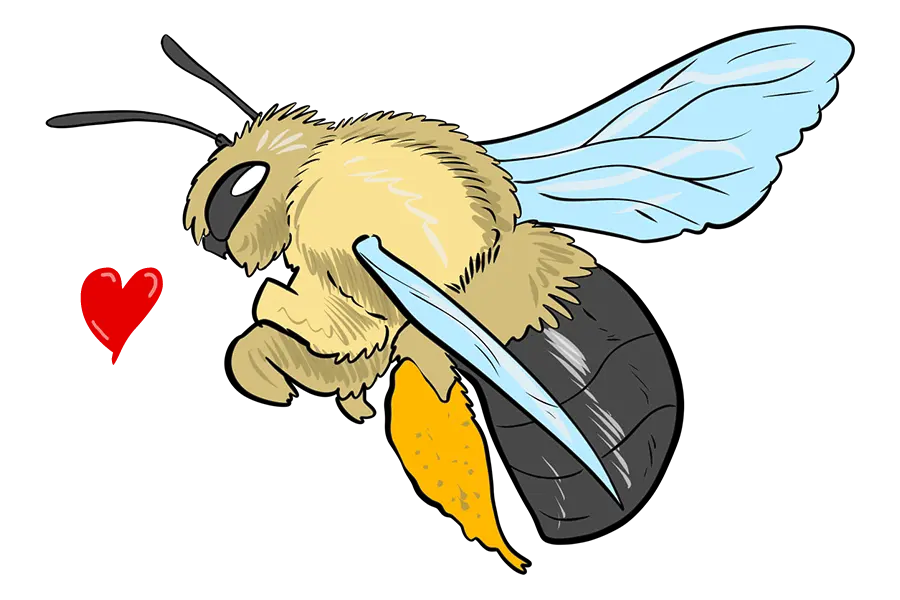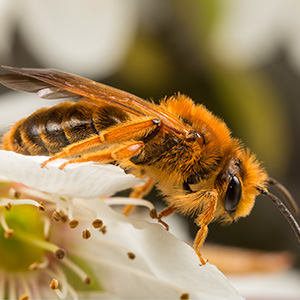 Plant native flowers and flowering trees and shrubs
Plant native flowers and flowering trees and shrubs
Plant a variety of flowers that bloom at different times throughout the year, including early spring and late fall. Focus on native plants, to which local pollinators are already adapted. If you grow exotic ornamentals, focus on “simpler” flower forms rather than highly hybridized varieties (for example, bees have no problem with “dog roses”, but they can’t get inside the “double” varieties with extra petals).
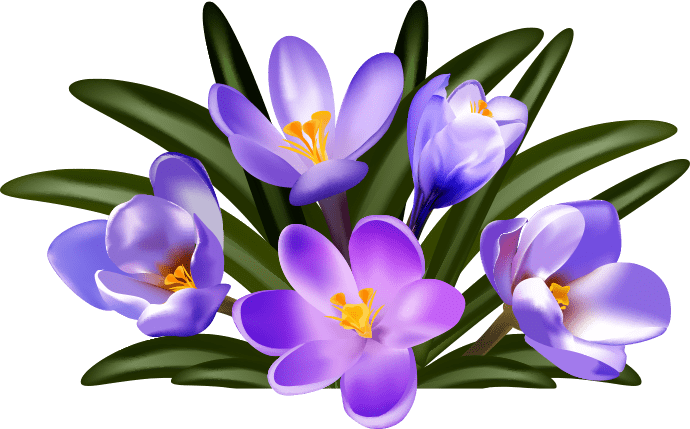
North American Plant Guides
- Pollinator Resource Center (website)
- Regional Planting Guides (website)
- Five Plants to Help Pollinators (excerpt)
- 100 Plants to Feed the Bees (book)
British Plant Guides
- Bee kind garden flower guide (website)
- Plants for bees (PDF)
Don’t forget about flowering trees such as apples, plums, pears, and cherries (and bushes like blueberries) if you have space. Even brambles like blackberries (kept in check!) will be abuzz with bees when in flower.
Selecting the right plants
Seek out locally native species (ideally as seeds, so as to avoid pesticides). Browsing local areas where you may happily (and legally) gather wildflower seeds in fall is one great way to welcome more native plants.
Some seed providers focus specially on native species (such as Northwest Meadowscapes in the Pacific Northwest, and Celtic Wildflowers in Britain... doubtless there are many more)!
"Conservationists are urging people to source not just native wildflowers but to find out what grows naturally in their neighbourhood by getting out in their area and looking for inspiration in existing meadows, verges and nature reserves."
"...sourcing seeds from local donor sites – provided it is in line with official guidance – will help rejuvenate the country’s regional wildflower meadows, which are all different and have adapted to local soils and pollinator populations."
—Gardeners urged to ‘keep it local’ when creating a wildflower meadow (The Guardian)

Beware nursery pesticides & cultivars
Make sure to ask your nursery or seed provider whether the plants or seeds you plan to buy have been pretreated with any pesticides. Pretreatment of plants is still very common—often with systemic pesticides such as neonicotinoids that are implicated in bee deaths worldwide.
Be aware too that many ornamentals sold to home gardeners are not attractive to pollinators. Some flowers are so hybridized they no longer even offer pollen! Avoid "double-petaled" varieties and other hybrids, staying with native and heirloom plants instead.
Grow your own vegetables and herbs from organic seeds, providing extra sources of food for local bees! Avoid using any pesticides, fungicides, and herbicides in your garden, and encourage others in your community to do the same.
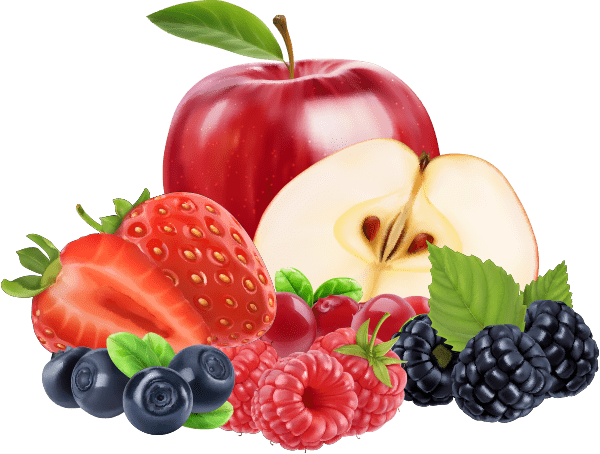
Feeding the bees, family & friends too
It's so deliciously healthy to grow (and share!) your own food. Think tomatoes, potatoes, strawberries, blueberries, melons and pumpkins. Bees love a little spice in their lives too! Try cilantro, basil, fennel, rosemary, thyme and mint.
We can thank insect pollinators for 1 out of every 3 bites of food… and the food they pollinate adds so much to our lives! Without pollinators, all the wind-pollinated plants would be left (such as wheat and corn), but none of the color and diversity that winged pollinators add.
One of my personal favorites to grow would bee artichokes… if you let some flower, they turn into these attractive violet beds of nectar and pollen for bees (like massive thistles)!
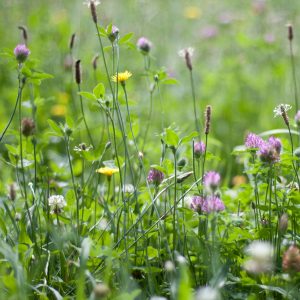 Even if you have a lawn, it’s easy to improve it for bees
Even if you have a lawn, it’s easy to improve it for bees
You’d be surprised at what will turn up if you simply stop mowing (if you have a lawn, that is). Dandelions are a common volunteer. Even though they’re not native to the U.S., they’re still great flowers for all sorts of bees, especially as they show up so early in the year, and flower throughout spring, summer, and late into fall.

Planning
- Attracting Native Pollinators (book)
- The Garden Jungle (book)
- How to Fight Plants with Plants (blog)
- Protecting Pollinators at Home (PDF)
Balcony Gardening
Native Wildflower Meadows
- Establishing Pollinator Meadows from Seed (PDF)
- Organic Site Preparation for Wildflower Establishment (PDF)
- Collecting and Using your own Wildflower Seed (PDF)
- Seed Mix Calculator (Excel spreadsheet)
Did you know that America has an estimated 40 million acres of lawn (requiring 3 billion gallons of gas annually to mow it)?
Dandelions and white clover provide abundant nectar and pollen that is easily accessible to a wide range of bees (different types of bees have different tongue lengths, restricting their flower choices to various extents). Red clover favors longer-tongued bumble bees.
Clovers are especially good in lawns, and the white variety flowers at a lower height than the red, so you can still mow occasionally (at your mower’s highest setting) if you choose. It even helps some ground-nesting bees if you keep a patch of closely mowed (or even bare) ground in a sunny spot.
Where has all their habitat gone?
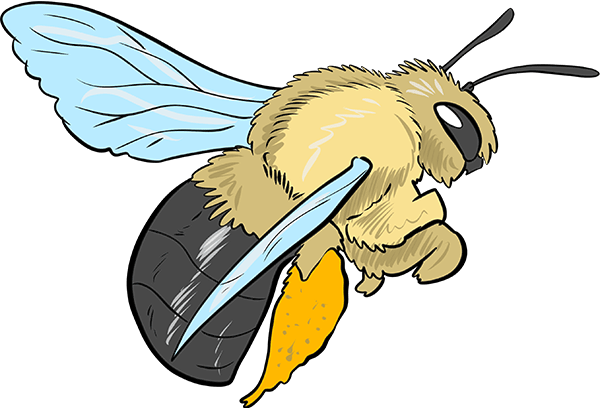
Throughout the world, there have been significant losses in bee habitat. In England and Wales, 97% of lowland wildflower meadows disappeared between 1930 to 1984. In the United States, grassland prairies—once rich habitats supporting pollinators and wildlife—are now functionally non-existent. Recent surveys suggest close to a 99.9% loss over the last 150 years, primarily due to increasing agricultural intensification.
In California—famed for its sweeping wildflower superblooms that can be seen from space—the landscape was once dominated by mass wildflower habitats instead of grasslands. In 1774, Spanish colonists wrote of “fields as verdant as they are flower-covered touch the very waters of the sea.” Wide-scale collapse of these habitats occurred after invasive grass arrived from Europe (along with grazing animals).
Similar losses are occurring in other ecosystems that once supported pollinators. Increasingly dense human populations are driving ever-increasing conversion of wild areas for farmland, suburban, and urban purposes. With this comes other threats to bees, including increased pesticide use, poor habitat management practices (mowing down wildflowers before they are able to set seed), artifical turf or concrete covering more of the areas where bees used to nest underground, and fewer and less reliable flowers throughout the seasons to support pollinators, among other issues.
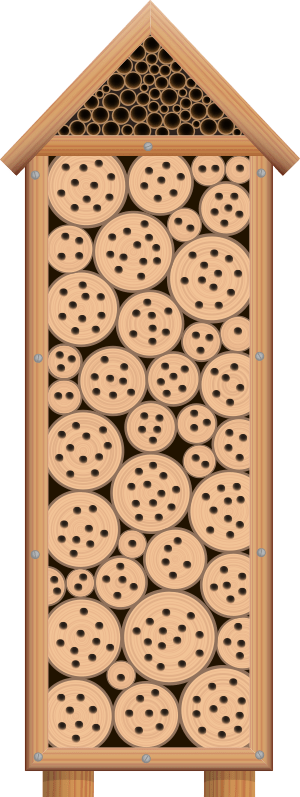
More beehives are not the answer
Even increasing honey bee densities can have a negative impact on our many thousands of native bee species. There are tens of thousands of honey bees in a hive, which means that each location requires a plethora of floral resources to support so many more bees. A study in 2016 found that one honey bee hive potentially outcompetes 100,000 native bees for pollen and nectar. If you’re a beekeeper, you can help by carefully selecting spots for your hives—ensuring there are numerous flowering plants throughout the bee seasons—so that competitive pressures do not impact native bee populations. If you live in a town, encourage bee hotels in your community, instead of beehives.
Plant medicines (for bees)
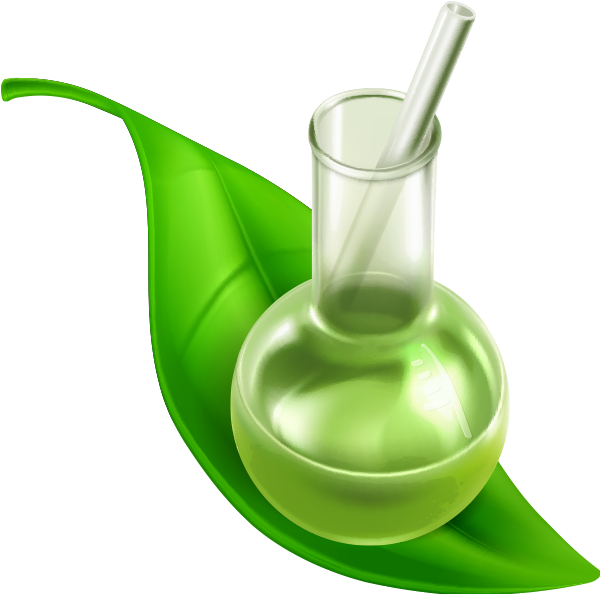
Did you know that bees enjoy caffeinated nectar? While growing coffee, tea or cacao is difficult outside more tropical climates, there's another surprising plant you might consider offering to bees: ornamental tobacco.
This sounds odd, given that synthetic nicotine compounds form the basis of bee-toxic neonicotinoid pesticides. But small amounts of tobacco in nectar can be beneficial. Studies have shown bumble bees visiting tobacco flowers more often when suffering from internal parasites (a common problem for bumble bees), and by ingesting very low levels of nicotine, bees are able to reduce these parasites and thus prolong their lives.
Doubtless many flowers offer their own unique health boosts to bees, so try to plant as many pollinator-friendly flowering plants as possible. The more diverse their diet, the more balanced and nutritious it will bee overall!
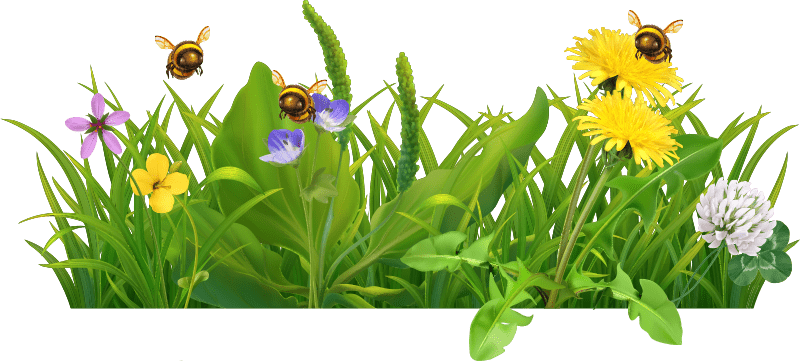
What else can I do to help?
Offer spots for bees to live, plus any raw building materials. Create a perfect habitat for bees in your garden, balcony, workplace, or community.
- Operating your own "bee hotel"
- Creating your own "bee bank"
- Observation boxes for solitary bees

